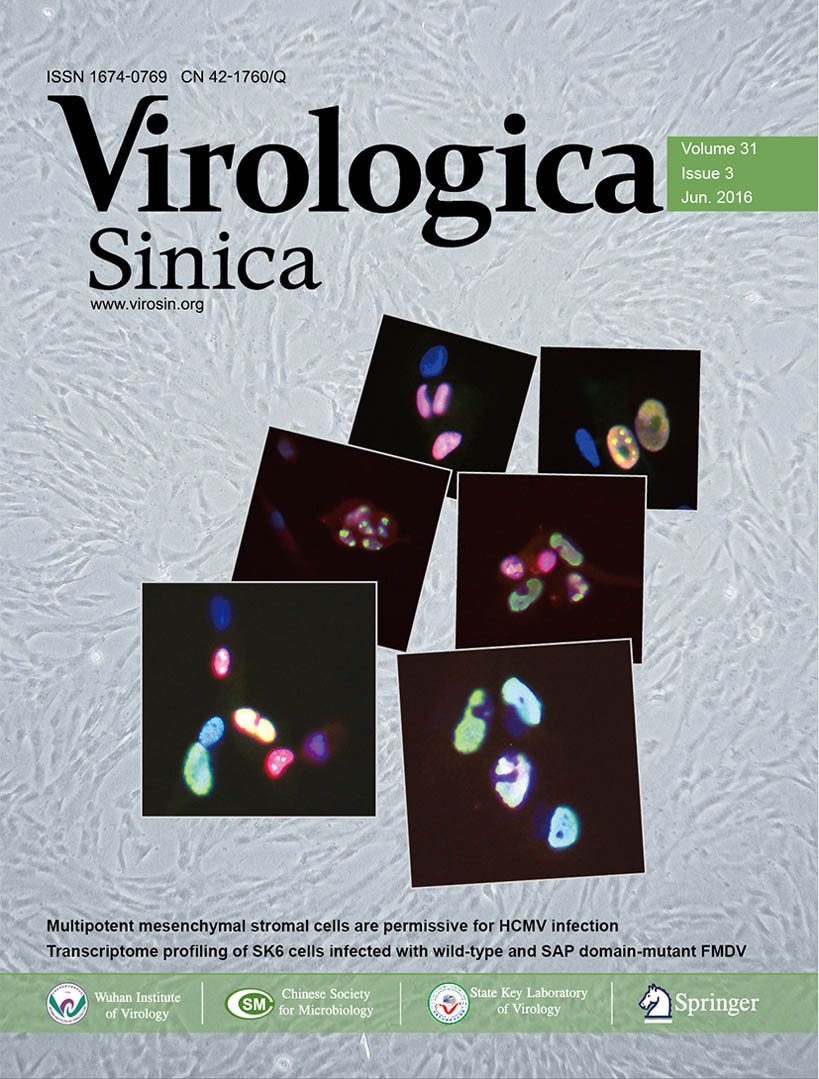Akiko Takenaka-Uema, Norasuthi Bangphoomi, Chieko Shioda, Kazuyuki Uchida, Fumihiro Gen, Kentaro Kato, Takeshi Haga, Shin Murakami, Hiroomi Akashi, Taisuke Hoimoto.Characterization of a recombinant Akabane mutant virus with knockout of a nonstructural protein NSs in a pregnant goat model .VIROLOGICA SINICA, 2016, 31(3): 274-277.doi: 10.1007/s12250-015-3704-2
Citation:
Akiko Takenaka-Uema, Norasuthi Bangphoomi, Chieko Shioda, Kazuyuki Uchida, Fumihiro Gen, Kentaro Kato, Takeshi Haga, Shin Murakami, Hiroomi Akashi, Taisuke Hoimoto.
Characterization of a recombinant Akabane mutant virus with knockout of a nonstructural protein NSs in a pregnant goat model .VIROLOGICA SINICA, 2016, 31(3)
: 274-277.
http://dx.doi.org/10.1007/s12250-015-3704-2
Characterization of a recombinant Akabane mutant virus with knockout of a nonstructural protein NSs in a pregnant goat model
-
Akiko Takenaka-Uema
1,2
,
-
Norasuthi Bangphoomi
1,3
,
-
Chieko Shioda
4
,
-
Kazuyuki Uchida
4
,
-
Fumihiro Gen
1,2
,
-
Kentaro Kato
1,5
,
-
Takeshi Haga
2
,
-
Shin Murakami
1
,
-
Hiroomi Akashi
1
,
-
Taisuke Hoimoto
1
,,

-
1.
Department of Veterinary Microbiology, Graduate School of Agricultural and Life Sciences, The University of Tokyo, Tokyo 113-8657, Japan
-
2.
Department of Infection Control and Disease Prevention, Graduate School of Agricultural and Life Sciences, The University of Tokyo, Tokyo 113-8657, Japan
-
3.
Department of Preclinical and Applied Animal Science, Faculty of Veterinary Science, Mahidol University, Phutthamonthon Nakhonpathom 73170, Thailand
-
4.
Department of Veterinary Pathology, Graduate School of Agricultural and Life Sciences, The University of Tokyo, Tokyo 113-8657, Japan
-
5.
National Research Center for Protozoan Diseases, Obihiro University of Agriculture and Veterinary Medicine, Obihiro 080-8555, Japan
-
Corresponding author:
Taisuke Hoimoto, ahorimo@mail.ecc.u-tokyo.ac.jp, ORCID: 0000-0002-9201-9424
-
-
Published Date:
06 April 2016
Available online:
01 June 2016
-
Abstract
Akabane virus (AKAV), an orthobunyavirus, is transmitted primarily by biting midges and is widely distributed throughout the world except the Europe. AKAV was first isolated from mosquitoes in Japan (Oya et al., 1961). Although pregnant cows, ewes, and goats infected with AKAV exhibit no clinical signs of disease, in utero infections result in abortion, premature birth, stillbirth, and congenital deformities such as arthrogryposis-hydranencephaly syndrome (Kurogi et al., 1976), causing economic losses in the livestock industry. The live, attenuated vaccine strain, TS-C2, was derived from the OBE-1 strain as a temperature sensitive mutant (Kurogi et al., 1979). Although vaccination has reduced the prevalence of the disease, antigenic and pathogenic variants of AKAV have been isolated (Lee et al., 2002; Ogawa et al., 2007a); for example, a variant Iriki strain was isolated from a calf with nonsuppurative encephalitis and neurological symptoms in Japan (Miyazato et al., 1989) and it shows low antigenic cross-reactivity with the reference strain in neutralization tests (Akashi and Inaba, 1997). Therefore, it is necessary to reconsider the vaccination strategy to effectively control the disease. Here we evaluated characters of a mutant virus with knockout of a nonstructural protein NSs, which acts as type I interferon antagonist and is involved in the regulation of host protein synthesis (Weber et al., 2002), by experimentally infecting pregnant goats. The pregnant goat model might be useful for AKAV studies, as suggested by previous reports of experimental transplacental infection of caprine fetuses (Kurogi et al., 1977).
-

-
-
References
-
Akashi H, Inaba Y. 1997. Virus Res, 47: 187-196.
doi: 10.1016/S0168-1702(96)01415-3
-
Bridgen A, Weber F, Fazakerley JK, et al. 2001. Proc Natl Acad Sci USA, 98: 664-669.
doi: 10.1073/pnas.98.2.664
-
Konno S, Nakagawa M. 1982. Vet Pathol, 19: 267-279.
doi: 10.1177/030098588201900305
-
Kurogi H, Inaba Y, Takahashi E, et al. 1976. Arch Virol, 51: 67-74.
doi: 10.1007/BF01317835
-
Kurogi H, Inaba Y, Takahashi E, et al. 1977. Natl Inst Anim Health Q (Tokyo), 17: 1-9.
-
Kurogi H, Inaba Y, Takahashi E, et al. 1979. Natl Inst Anim Health Q (Tokyo), 19: 12-22.
-
Lee JK, Park JS, Choi JH, et al. 2002. Vet Pathol, 39: 269-273.
doi: 10.1354/vp.39-2-269
-
McElroy AK, Albariño CG, Nichol ST. 2009. Virol J, 6: 125.
doi: 10.1186/1743-422X-6-125
-
Miyazato S, Miura Y, Hase M, et al. 1989. Jpn J Vet Sci, 51: 128-136.
doi: 10.1292/jvms1939.51.128
-
Ogawa Y, Fukutomi T, Sugiura K, et al. 2007a. Vet Microbiol, 124: 16-24.
doi: 10.1016/j.vetmic.2007.03.020
-
Ogawa Y, Sugiura K, Kato K, T et al. 2007b. J Gen Virol, 88: 3385-3390.
doi: 10.1099/vir.0.83173-0
-
Oya A, Okuno T, Ogata T, et al. 1961. J Med Sci Biol, 14: 101-108.
doi: 10.7883/yoken1952.14.101
-
Stram Y, Kuznetzova L, Guini M, et al. 2004. J Virol Methods, 116: 147-154.
doi: 10.1016/j.jviromet.2003.11.010
-
Takenaka-Uema A, Sugiura K, Bangphoomi N, et al. 2016. J Virol Methods, 232:16-20.
doi: 10.1016/j.jviromet.2015.12.014
-
Tsuda T, Yoshida K, Yanase T, et al. 2004. J Vet Diagn Invest, 16: 571-576.
doi: 10.1177/104063870401600613
-
Weber F, Bridgen A, Fazakerley JK, et al. 2002. J Virol, 76: 7949-7955.
doi: 10.1128/JVI.76.16.7949-7955.2002
-
Proportional views

-













